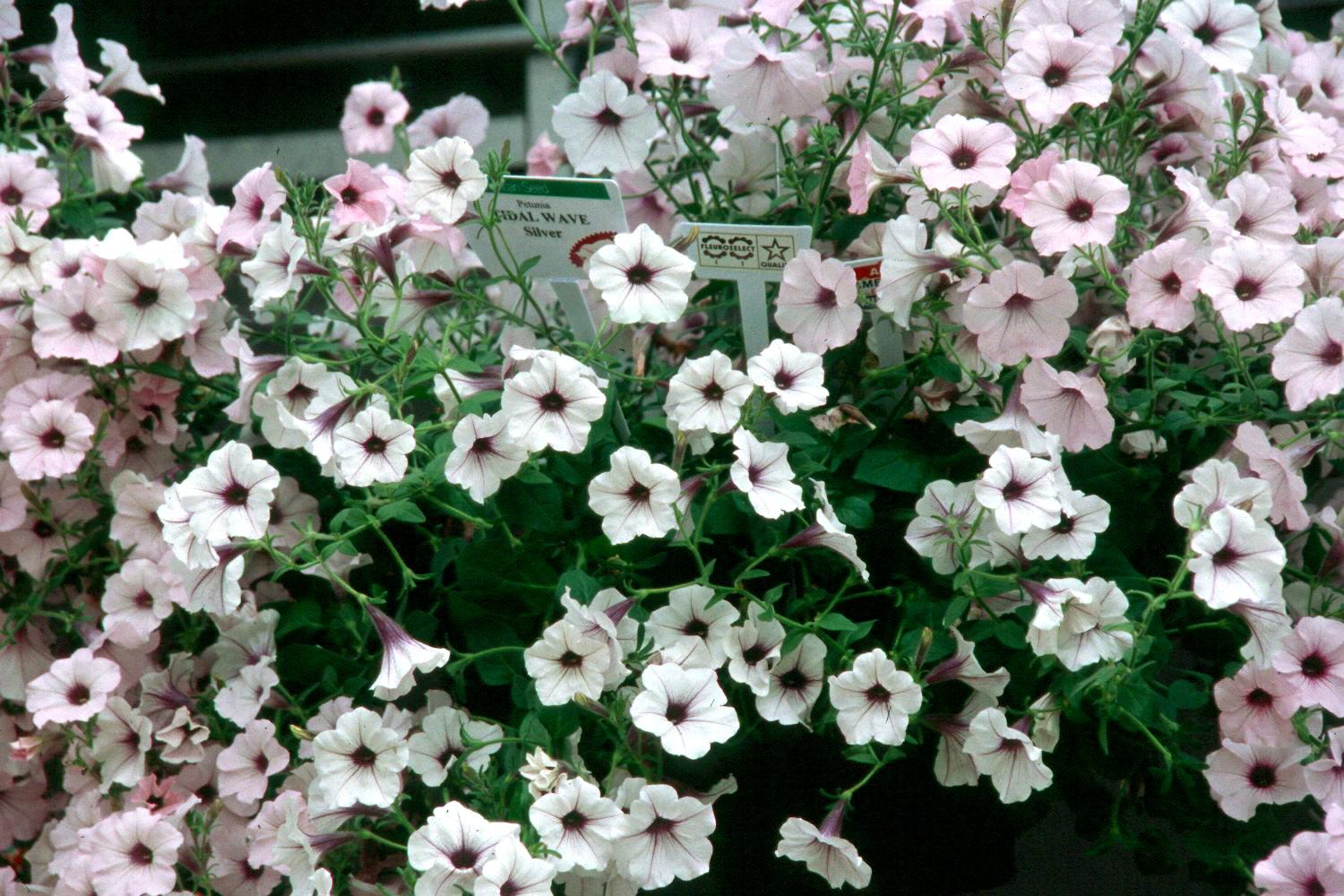Information Possibly Outdated
The information presented on this page was originally released on December 31, 2001. It may not be outdated, but please search our site for more current information. If you plan to quote or reference this information in a publication, please check with the Extension specialist or author before proceeding.
Waves pour into Mississippi hearts
By Norman Winter
MSU Horticulturist
Central Mississippi Research & Extension Center
Wave petunias keep pouring in -- much to the delight of gardeners everywhere. It was just a couple of years ago the Waves as a group (purple, pink, lilac and rose) were declared Mississippi Medallion winners and now there is Lavender Wave.
Lavender Wave has earned the coveted All-America Selections Award for 2002. It features a trailing, ground cover habit and exceptional garden performance similar to the famous Purple Wave. Lavender Wave can trail 3 to 4 feet and attain a height of 4 to 6 inches in a full sun location. I think gardeners will find this color exceptional.
Because of weather tolerance and disease resistance, plants can be expected to flower for just about the entire growing season. No pinching or pruning of plants is required, only nutrients in the soil and water. Lavender Wave is particularly suited for hanging baskets, window boxes and terraced or sloping gardens.
The Tidal Wave petunias rocked the nursery industry two years ago when they made their debut with Cherry and Hot Pink. When I first saw the petunias, they were called the Dramatica series, which was appropriate because they are dramatic. But someone was proved to be a genius and renamed them Tidal Wave, thus they became an instant hit. The name Tidal Wave helped sell gazillions of them.
The Tidal Wave series introduced a new class of petunia called hedgiflora. If you think about that name, it sounds like a petunia that will make a hedge. Right on! If I hadn't seen them with my own eyes, I would not have believed it.
This brings us to the latest, Tidal Wave Silver, that also happens to be an All-America Selections winner for 2002. Tidal Wave Silver sports silvery-white blooms with dark-purple centers. Unlike other petunias, gardeners can decide the height of the mature Tidal Wave plant.
Tidal Wave Silver can attain heights of 2 to 3 feet if spaced about six inches apart and given support, such as a trellis. If spaced a foot apart the mounded hedge-like plants will reach 16 to 22 inches. Neither pruning, nor pinching is needed for flowers all season. It also has a rapid recovery in severe weather.
When Tidal Waves first start growing, you almost sense they are getting leggy except they actually are sending up and out what would equate to a vine or stem. If you were blindfolded and felt the long stem, your first guess would not be petunia.
The plants are exceptional in the landscape, large containers and large-baskets, and deliver traffic-stopping performance in window boxes.
As good as all the Waves are, don't expect wonderful success without the proper bed preparation. Take the time to work in 3 to 4 inches of organic matter and till to a depth of about 8 inches. As you do this, add about two pounds of a slow-release 12-6-6 fertilizer per 100 square feet, or a formula pretty close. After planting, water deeply and apply a good layer of mulch.
Both the Tidal Wave Silver and Lavender Wave offers a lot of choices for plant combinations. If you try growing Tidal Wave Silver mix in the border with perennials like purple coneflower, purple angelonias or the burgundy form of Salvia vanhouttei.
The Lavender Wave is striking with yellow-gold flowers like the New Gold lantana or Indian Summer rudbeckia, both Mississippi Medallion winners. Also try white flowers like Shasta daisies.
The spring garden season looks to be great with the addition of these two All-America Selections winning petunias, Lavender Wave and Tidal Wave Silver. I hope you will check your garden centers this spring and give both of them a try.




